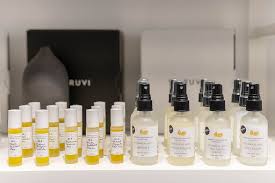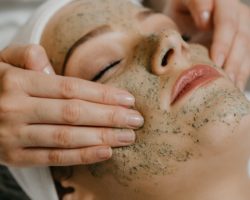Face and body care requires an investment – there’s no arguing with that fact. But the size of the ‘investment’ can vary. But there are still ways to cut your cosmetics budget, if you think critically and shop carefully.
Here’s how to bust five popular myths about beauty products that can get you stuck with a lot of money.
Myth 1: More expensive equals better.
The stereotype that more expensive make-up is better than budget make-up makes manufacturers richer. But your wallet may get significantly slimmer after you buy yet another jar of an overpriced cream.
This myth was debunked by British journalist Claire Cisotti. She ran the experiment for a month using two creams: Nivea for £1.15 and Creme de la Mer for £105. The price difference was not insignificant. She applied the creams simultaneously – one to the left side of her face and one to the right. Before and after the experiment, Claire visited a dermatologist who examined her skin with specialised equipment. The skin on the side where the cheap cream was applied appeared to be in better condition – it was nourished and moisturised. On the other hand, there was no improvement.
Of course, the experiment that Claire Cisotti conducted can’t claim to be the ultimate truth. But the “expensive doesn’t mean better” view is supported by many dermatologists. Dr Charlotte Birnbaum of New York says:
The difference between an affordable moisturiser and an expensive one may lie in a few things: marketing, packaging and possibly proprietary ingredients. Skin-healthy substances may be more expensive because they are rare. But that does not mean that they are more effective. Often the consumer is not given scientific proof that the ingredients in the composition are actually worth it.
Myth 2: Eye skin needs a special cream
In the line of every self-respecting cosmetics brand, there is a separate jar of eye cream. It’s expensive, but there’s no evidence of its effectiveness.
Dr. Macren Alexiades, Associate Professor of Medicine at Yale University, is adamant: “There is no real reason to buy a separate eye cream. There’s no real reason to buy a separate eye cream. In the opinion of Alexiades, a well-publicised eye treatment will not erase wrinkles or dark circles, something that cosmetics are not capable of doing. He suggests protecting the skin well against the harmful effects of UV rays rather than getting an expensive but useless eye cream.
Just compare the contents of your face and eye creams to see for yourself. Most likely, the list of ingredients will be almost identical. The only difference is texture: products for the delicate eye zone are lighter. So, is it worth overpaying?
Myth 3: Organic cosmetics are better.
Everyone is talking about the benefits of natural cosmetics. By the way, it costs more than its “chemical” counterparts.
The European brands, producing the “green” cosmetics, stick to the well-defined standards. Organic products have to contain at least 95% natural ingredients, produced using physical methods. Naturally, these are expensive technologies and developments, hence the high price tag of the finished product. Still, there is no scientific evidence that organic cosmetics work better. And according to dermatologists, it’s not so safe. Natural products contain high concentrations of plant extracts, which can cause irritating and allergic contact dermatitis.
Before buying, it’s important to study the composition of the product. And let us not forget that the legendary labels “Organic,” “Bio,” and “Eco” are not a guarantee that you are dealing with truly organic cosmetics. In Russia, there are no clear standards for the production of natural care products. By putting a green leaf on the package, the manufacturer often just wants to attract the attention of the consumer, not forgetting, of course, to raise the price tag.
Myth 4: Creams will eliminate cellulite without a trace
If only one brand had invented a cure for cellulite, the whole scientific community would be talking about it by now. Alas, there is no such thing. And here’s more bad news: cellulite cannot be eliminated at all. So why buy kilograms of creams and gels aimed at combating “orange peel”?
According to New Jersey-based dermatologist Asma Ahmed, up to 98% of women suffer from cellulite. It is a structural change in the subcutaneous layer, leading to poor circulation and lymphatic outflow, congestion in adipose tissue. Cellulite can only be prevented or made less visible, but certainly not “cured”. A healthy diet and regular exercise are the keys to success. Cosmetics are only an aid in nourishing, toning and moisturising the skin. But for this, in general, any body cream – not as expensive as anti-cellulite cream – will do.
According to doctors, only special cosmetic procedures can reduce the appearance of cellulite up to 75% – laser therapy and cryolipolysis. But regular sessions and combination with sports are necessary.
Myth 5: you need a mechanical brush for deep cleansing
Many people have already acquired mechanical scrubbing brushes. But these tech gadgets are definitely not worth the money and, in addition, could be detrimental to your skin. You should skip this purchase and save your budget for a good scrub in your beauty salon.
Dermatologists say frequent use of cleansing brushes can cause serious skin damage. It’s like rubbing your face diligently with a toothbrush. For example, several female fans of the Clarisonic Face Brush gadget have been found to have serious dermatological problems after prolonged use of the brush. There was no fuss, but the brand took the devices off the market this year. Silicone vibro cleansing brushes (the Foreo-type with the exorbitant price tag) work gentler, but their effectiveness is also unproven, and again, it’s not recommended to use them more than a couple of times a week.
Overall, brushes are just a pretty device on your dressing table. Expensive, potentially dangerous and of unproven effectiveness.






